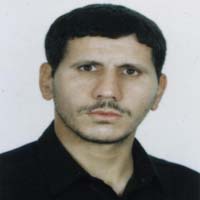Application K-Means, Fuzzy C-Means and Gustafson-Kessel FCM Methods in Integration of Refraction Seismic Tomography and Electrical Resistivity Data Inversion Results for Evaluation of the Alluvium and Bedrock
Author(s):
Article Type:
Research/Original Article (دارای رتبه معتبر)
Abstract:
In recent years, fuzzy partitioning cluster algorithms have become more popular. Similar to crisp partitioning clustering, fuzzy algorithms can be used to integrate multiple models into a single zonal multiparameter model by grouping samples in a multidimensional space into clusters. The concept of partial cluster memberships integrates the structural heterogeneity of all input models and describes it in a fuzzy sense. In this study, the electrical resistivity data inversion is made by Gauss-Newton least squares method using RES2DINV software and also, the first arrival or break times are calculated using PickWin software, and moreover, the refraction seismic tomography data inversion is carried out using GeotTom CG software. Then, the data results have been clustered by three
Methods
K-Means, FCM and Gustafson-Kessel FCM. Using Dunn index to optimize the number of clusters, the number of optimal clusters has been obtained equal to 12 that is a suitable number of clusters by considering the obtained electrical resistivity and refraction seismic tomography maps. Furthermore, considering the studies made in the dam site, alluvial basin and bedrock as well as bedding, it seems that Gustafson-Kessel FCM clustering method has shown better results. By starting Gustafson-Kessel algorithm and obtaining the results of running FCM, we see that the number of iterations is reduced and the speed of convergence is increased. The clustering algorithm computations in this research work have been made using programming in MATLAB software.Keywords:
K , Means , Fuzzy C , Means , Gustafson , Kessel FCM method , clustering , Tomography , MATLAB
Language:
Persian
Published:
Journal of Earth Sciences, Volume:3 Issue: 2, 2018
Pages:
183 to 198
https://magiran.com/p1831166
مقالات دیگری از این نویسنده (گان)
-
Development of Drone-Borne Geophysical Surveys for Mineral Exploration
Reza Moezzi Nasab *, Abolghasem Kamkar-Rouhani, Alireza Arab-Amiri
Journal of environment and sustainable mining, Spring 2024 -
Recognition coefficient of spatial geological features, an approach to facilitate criteria weighting for mineral exploration targeting
Mahyar Yousefi *, Saeed Yousefi, A.Ghasem Kamkar Rouhani
International Journal of Mining & Geo-Engineering, Autumn 2023


